Spicy Szechuan Noodles with Garlic Chili Oil
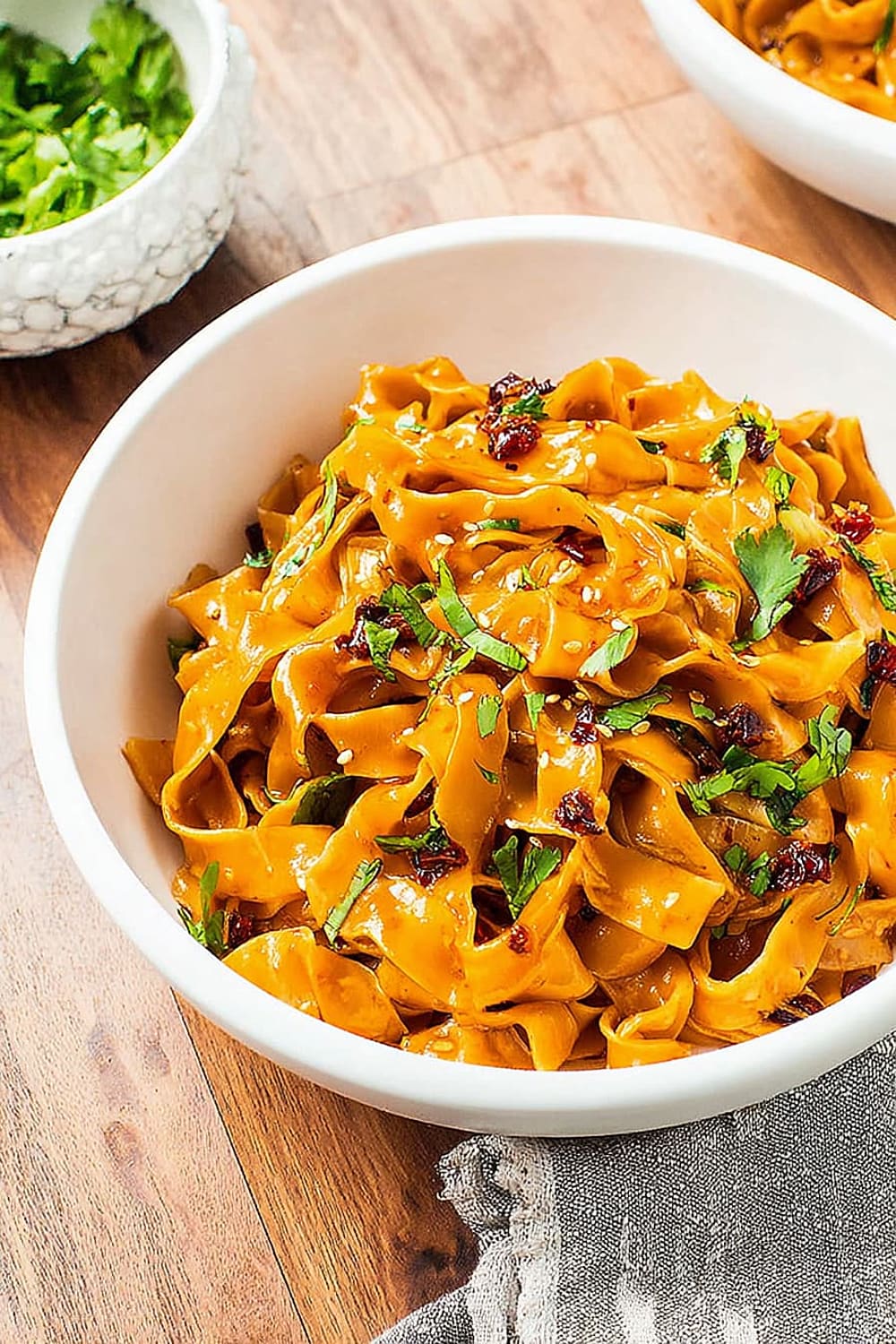
This recipe is basically a shortcut to achieving that perfect “wow, you can actually cook” moment without spending hours in the kitchen or hunting down twenty obscure ingredients.
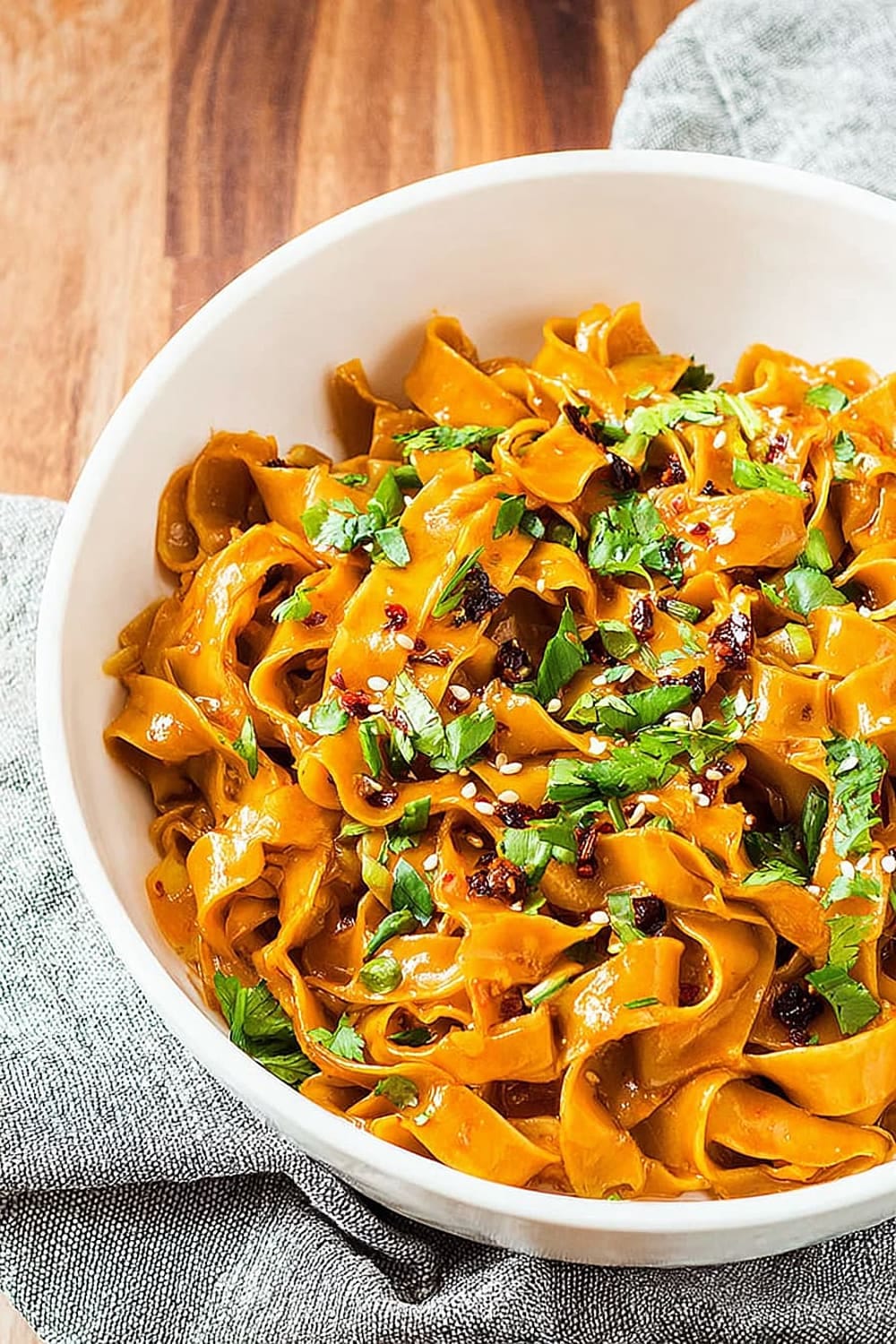
The beauty of Szechuan noodles lies in that magical garlic chili oil that transforms simple wheat noodles into something that tastes like it came from your favorite hole-in-the-wall noodle shop.
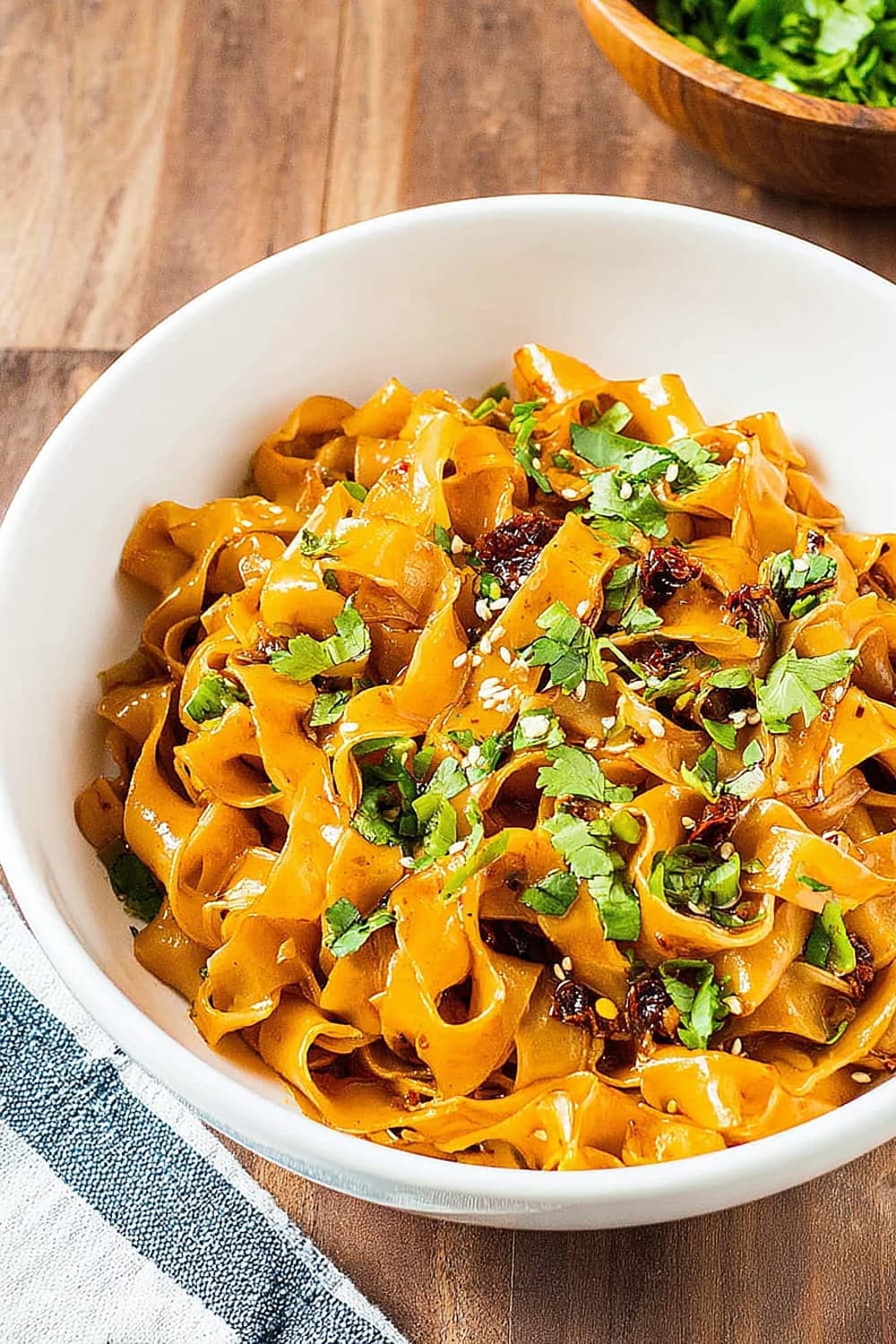
We’re talking about a dish that delivers serious heat, umami depth, and that addictive tingly sensation that makes you question why you ever settled for plain pasta with jarred sauce.
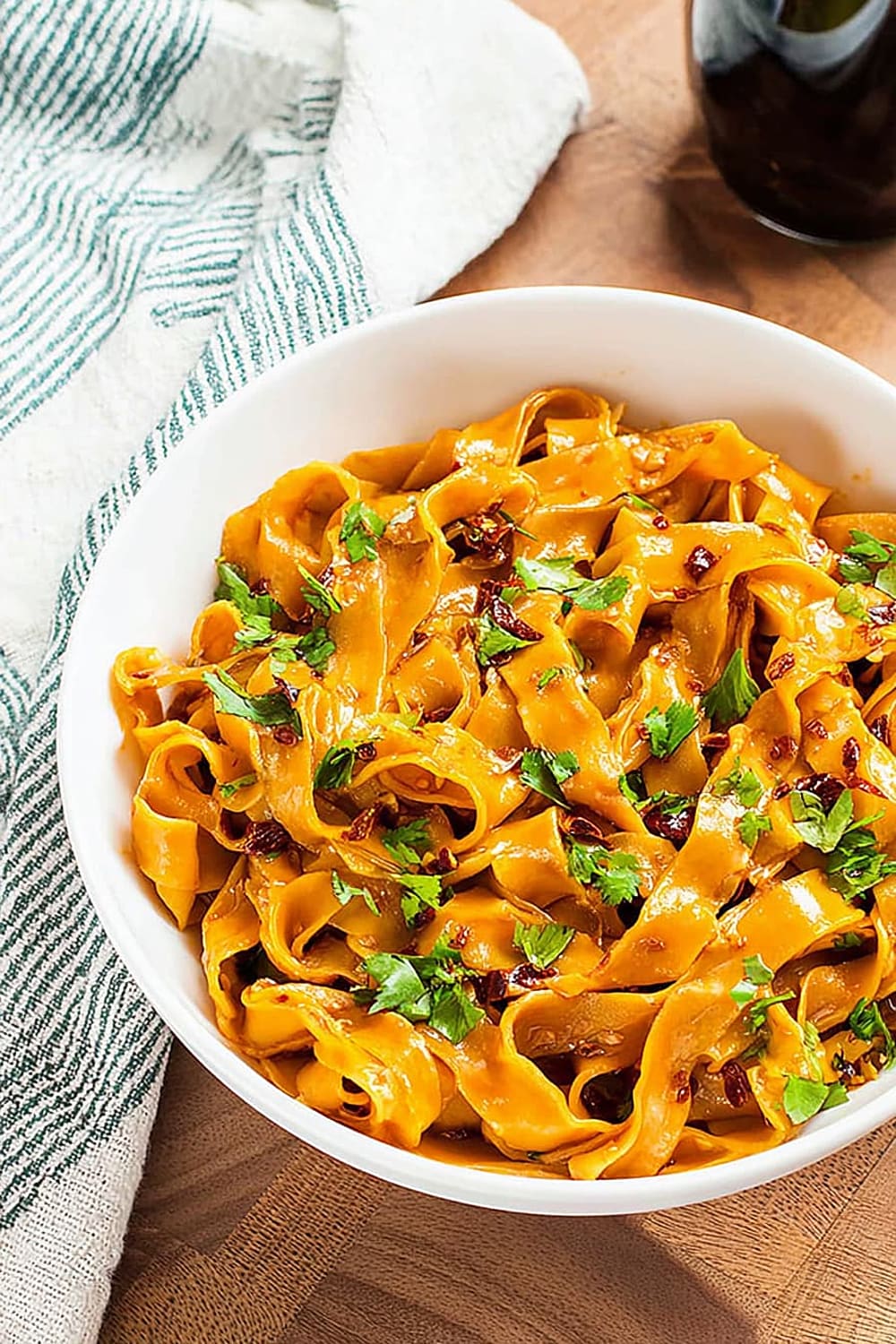
The best part is watching people take their first bite and immediately ask for the recipe, assuming you’ve been secretly trained by a Chinese grandmother.
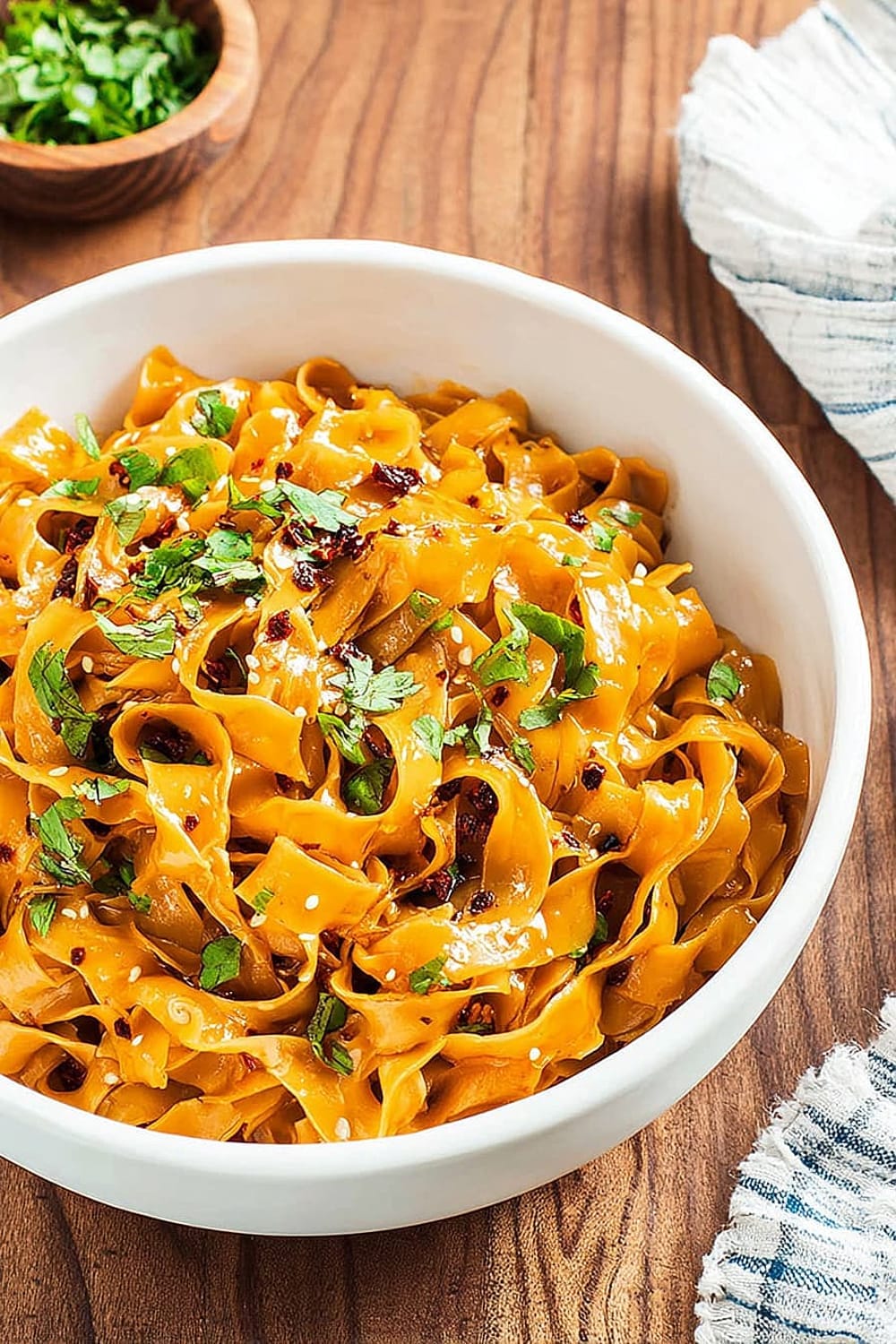
In reality, this entire dish comes together in about 10 minutes using ingredients you can find at most grocery stores, though a quick trip to an Asian market will definitely level up your game.
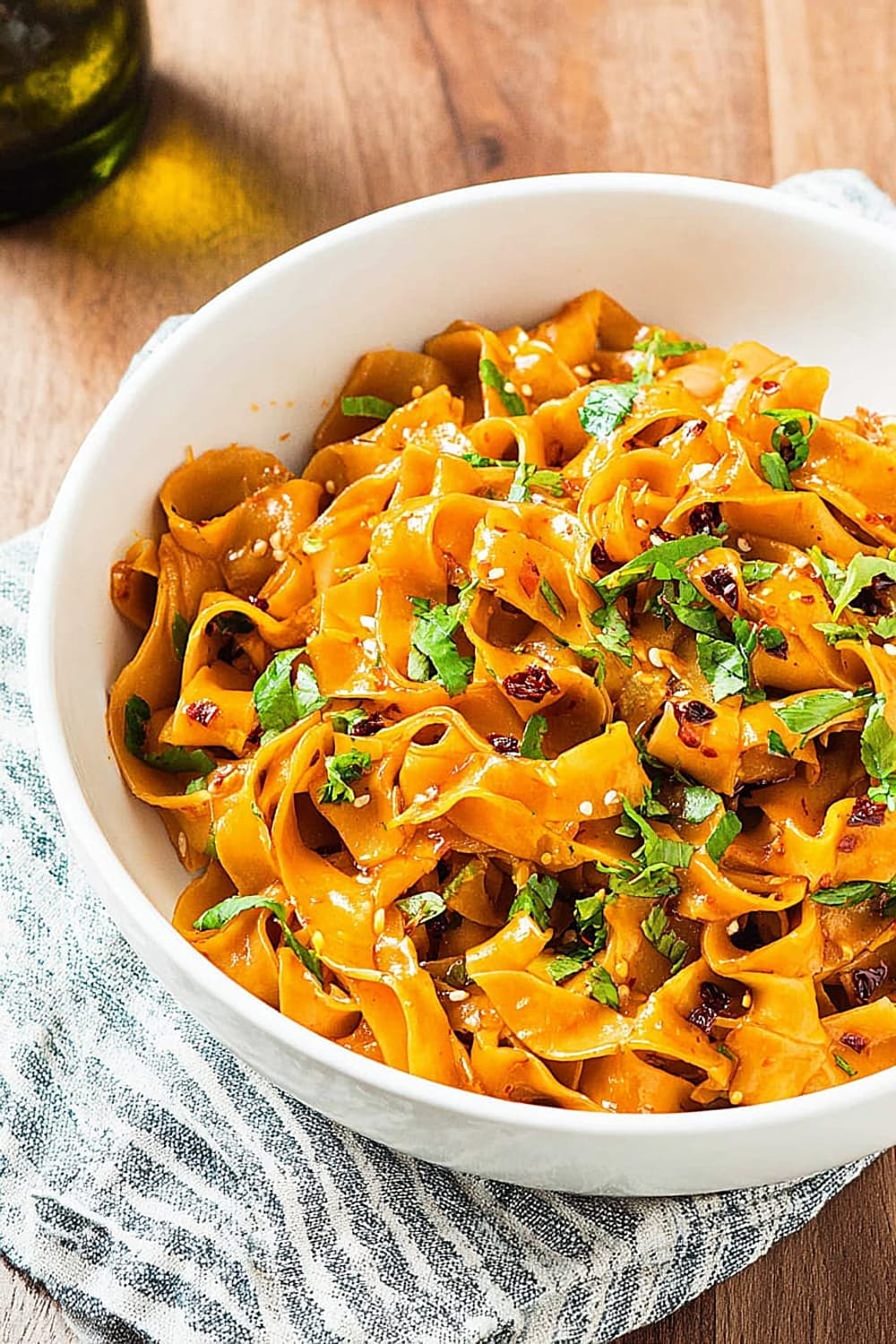
Fair warning: once you master this garlic chili oil technique, you’ll find yourself drizzling it on everything from eggs to pizza, and your friends will start expecting you to bring “those noodles” to every potluck.

Ingredients
For the Noodles
- 7 oz flat or wide Chinese wheat noodles (100g or 2 servings)
- 1 stalk scallion, chopped
- Handful fresh cilantro, chopped
- Sesame seeds for garnish
For the Szechuan Garlic Chili Oil Sauce
- 3 cloves garlic, minced
- 1 to 2 tablespoons Szechuan chili flakes (adjust to taste)
- 3 tablespoons vegetable oil
- 1 tablespoon dark soy sauce (regular soy sauce works too)
- 2 to 3 teaspoons Chinese black vinegar (balsamic or rice wine vinegar as substitute)
- ½ teaspoon fresh ginger, grated
- ¼ teaspoon salt (or to taste)
- ¾ teaspoon sugar (optional)
Optional Heat Boosters
- 1 teaspoon Lao Gan Ma Spicy Chili Crisp
- 1 teaspoon hot chili oil
- Finely chopped Thai chilies

Instructions
Prepare the Garlic Chili Oil
- 1 Heat 3 tablespoons vegetable oil in a small pot or cast iron skillet over medium heat until it begins to shimmer, about 1-2 minutes. Using a small pot allows for better control of the oil temperature and prevents the garlic from burning.
- 2 Add minced garlic to the hot oil and sauté until fragrant and just beginning to turn golden, about 30 seconds. The key here is timing – you want that beautiful garlic aroma without any bitter burnt flavors, so watch carefully and stir constantly.
- 3 Immediately remove the pot from heat and quickly whisk in the Szechuan chili flakes, dark soy sauce, Chinese black vinegar, grated ginger, salt, and sugar if using. The residual heat will bloom the spices perfectly without scorching them.
Cook the Noodles
- 4 Bring a large pot of water to a rolling boil over high heat. Using plenty of water prevents the noodles from sticking together and ensures even cooking throughout.
- 5 Add the flat Chinese wheat noodles and cook according to package directions, typically 3-5 minutes for fresh noodles or 6-8 minutes for dried. Test for doneness by tasting – they should be tender but still have a slight bite.
- 6 Drain the noodles thoroughly and rinse under cold running water to stop the cooking process and remove excess starch. Shake the colander vigorously to remove as much water as possible, as wet noodles will dilute your carefully crafted chili oil.
Assemble and Serve
- 7 Transfer the drained noodles to a large mixing bowl and add the garlic chili oil sauce gradually, starting with half and tossing with tongs or chopsticks. Taste and add more sauce according to your heat preference and desired flavor intensity.
- 8 Divide the sauced noodles between two serving bowls and top generously with chopped scallions, fresh cilantro, and a sprinkle of sesame seeds. Serve immediately while the noodles are still warm and the aromatics are at their peak.
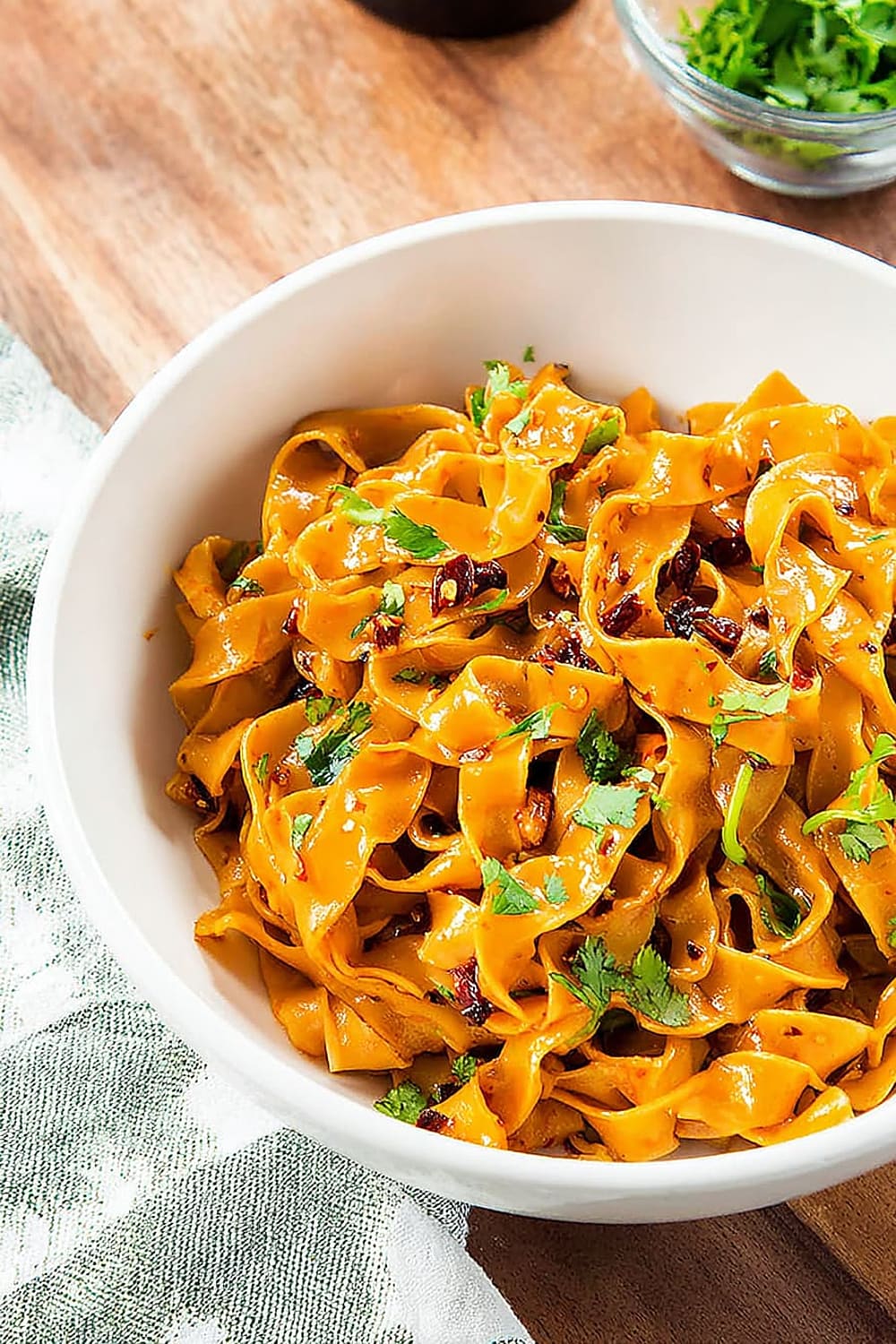
Recommended Equipment and Kitchen Tools
Essential Tools (for best results):
- Small heavy-bottomed pot or cast iron skillet – Essential for controlling oil temperature when making the chili oil. The heavy bottom prevents hot spots that could burn your garlic
- Large pot for boiling noodles – You need plenty of water space to prevent noodles from sticking together
- Fine-mesh colander – Crucial for thoroughly draining noodles and removing excess starch
- Mixing bowls – A large bowl makes tossing noodles with sauce much easier and prevents spillage
Helpful Upgrades:
- Microplane grater – Creates perfectly fine ginger gratings that distribute evenly throughout the sauce
- Tongs or chopsticks – Professional-level noodle tossing and serving, plus they help you gauge sauce distribution
- Digital kitchen scale – For precise noodle portioning, especially helpful when scaling the recipe up or down
- Immersion blender – If you want to make larger batches of chili oil and achieve a smoother consistency
Nice-to-Have Options:
- Mandoline slicer – For perfectly uniform scallion cuts that look restaurant-quality
- Storage containers – Glass jars with tight lids are perfect for storing extra chili oil in the refrigerator
- Silicone spatula – Heat-resistant and perfect for scraping every bit of that precious chili oil from the pot

Recipe Variations and Dietary Modifications
Gluten-Free Adaptation:
- Substitute with rice noodles or gluten-free wheat noodles using the same weight measurements
- Use tamari instead of soy sauce to keep the entire dish gluten-free
- Cook rice noodles according to package directions, but watch carefully as they can go from perfect to mushy quickly
- Expect a slightly different texture – rice noodles are more delicate and absorb flavors differently
Protein Additions:
- Shredded chicken – Add 1 cup cooked chicken breast or thighs for a complete meal
- Ground pork – Brown ½ pound seasoned ground pork and mix into noodles
- Tofu cubes – Pan-fry firm tofu until golden for plant-based protein
- Soft-boiled eggs – Top each serving with a halved egg for richness
Vegetable Boost:
- Blanched bok choy – Add during the last minute of noodle cooking
- Julienned carrots – Provides sweetness and crunch contrast
- Bean sprouts – Toss in raw for textural interest
- Sliced bell peppers – Quick sauté before adding to noodles
Heat Level Variations:
- Mild version – Use only 1 teaspoon chili flakes and omit optional heat boosters
- Extra spicy – Double the chili flakes and add fresh sliced Thai chilies
- Smoky heat – Add a pinch of smoked paprika to the chili oil
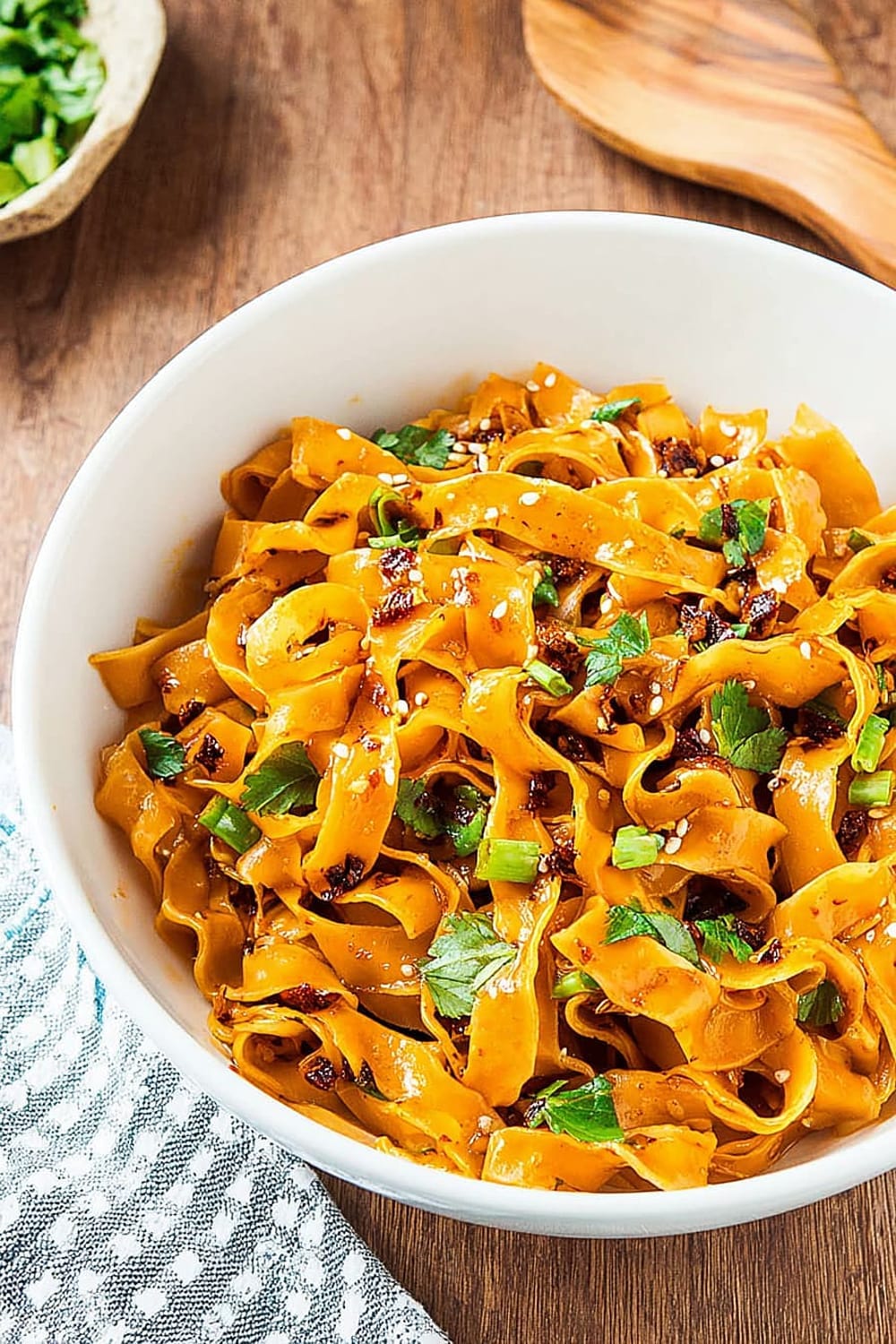
Nutritional Information and Health Benefits
Key Nutritional Highlights:
This recipe provides approximately 420 calories per serving, with the majority coming from complex carbohydrates in the wheat noodles and healthy fats from the vegetable oil. Each serving contains roughly 12g protein, 58g carbohydrates, and 16g fat, making it a well-balanced meal that provides sustained energy.
Health Benefits of Main Ingredients:
Garlic is packed with allicin, a compound known for its anti-inflammatory and immune-boosting properties. The heating process transforms some of these compounds while maintaining cardiovascular benefits. Fresh ginger contains gingerol, which aids digestion and has natural anti-nausea properties – perfect for balancing the heat from the chilies. Szechuan chili flakes provide capsaicin, which can boost metabolism and provide natural pain relief, while also delivering vitamin C and antioxidants.
Dietary Considerations:
This recipe is naturally dairy-free and can easily be made vegan by ensuring your noodles don’t contain eggs. The dish is relatively high in sodium due to the soy sauce and should be enjoyed in moderation by those watching salt intake. The complex carbohydrates from wheat noodles provide steady energy release, while the healthy fats help with nutrient absorption and satiety.
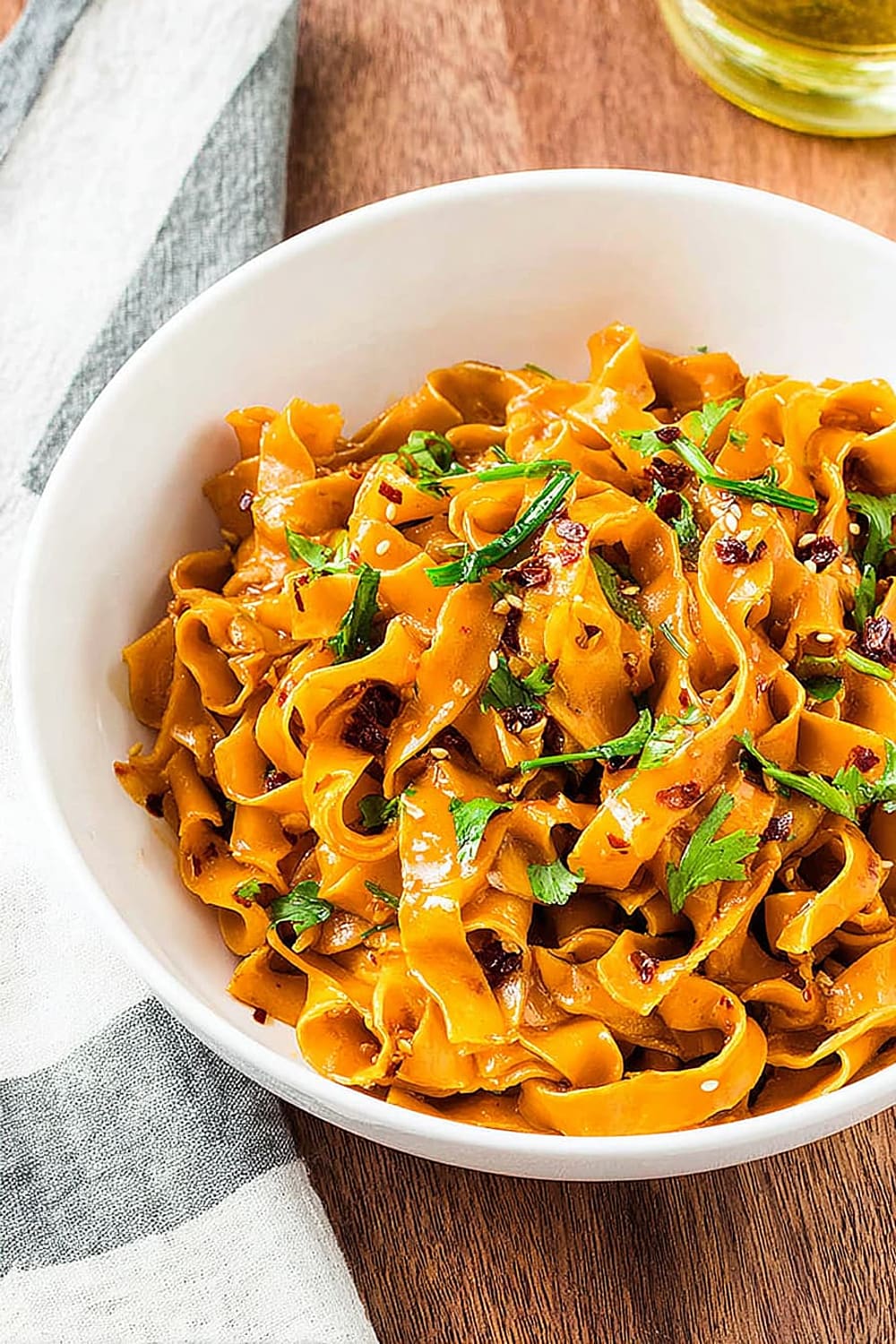
Smart Swaps and Ingredient Substitutions
Common Substitutions:
- Chinese wheat noodles → Fresh linguine or fettuccine (use same weight)
- Dark soy sauce → Regular soy sauce plus ½ teaspoon molasses for color
- Chinese black vinegar → Balsamic vinegar or rice wine vinegar (start with less, add to taste)
- Szechuan chili flakes → Red pepper flakes plus a pinch of ground Szechuan peppercorns
Budget-Friendly Swaps:
- Fresh ginger → ¼ teaspoon ground ginger (add with dry ingredients)
- Sesame seeds → Chopped peanuts or omit entirely
- Lao Gan Ma chili crisp → Extra chili flakes plus a drizzle of sesame oil
- Vegetable oil → Neutral oils like canola or peanut oil work perfectly
Pantry Emergency Substitutions:
- Fresh scallions → 2 tablespoons dried chives or finely diced yellow onion
- Fresh cilantro → Fresh parsley or basil (different flavor but still fresh and bright)
- Chinese black vinegar → Apple cider vinegar with a tiny pinch of sugar
Pro Tips for Substitutions:
- When using regular soy sauce instead of dark, your noodles will be lighter in color but equally delicious
- Store leftover chili oil in the refrigerator for up to one week – it actually improves in flavor
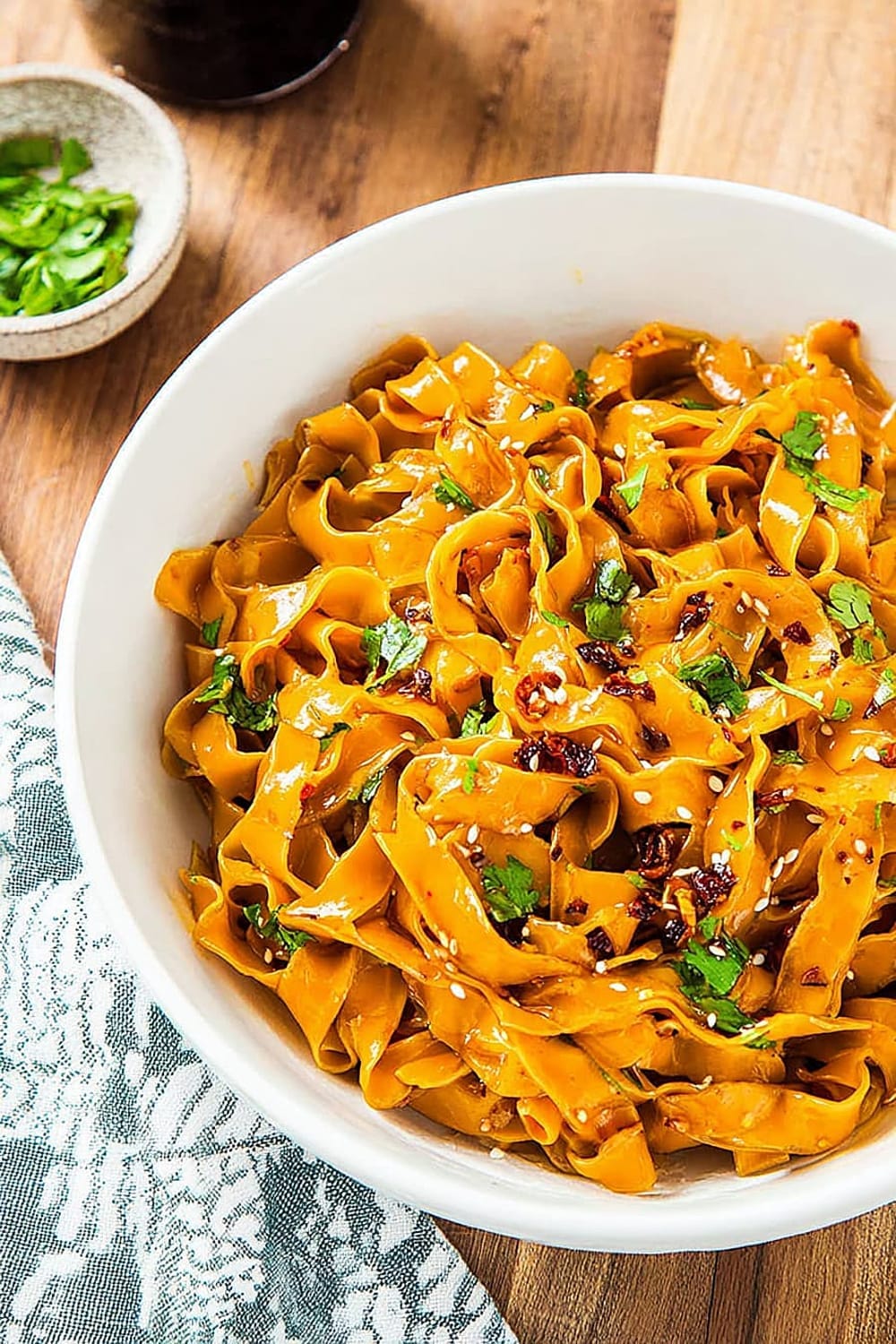
Make It Diabetes-Friendly
Carb Reduction Strategies:
- Replace wheat noodles with shirataki noodles or zucchini noodles to reduce carbs from 58g to under 10g per serving
- Portion control – Use 4 oz noodles instead of 7 oz and bulk up with extra vegetables like bok choy or bean sprouts
- Cauliflower rice noodles – Some brands offer low-carb alternatives that work well with strong sauces
Sugar Modifications:
- Omit the sugar completely – the recipe works perfectly without it
- Use stevia or monk fruit if you prefer a touch of sweetness (use just a pinch)
- Let natural ingredients shine – the garlic and ginger provide natural sweetness when properly caramelized
Portion & Timing Tips:
- Serve smaller portions (½ cup noodles) alongside a large salad or steamed vegetables
- Add protein like grilled chicken or tofu to help stabilize blood sugar
- Estimated carbs per modified serving: 25-30g when using portion control method
Enhanced Vegetable Version:
- Double the vegetables and use noodles as an accent rather than the main component
- Add fiber-rich additions like broccoli slaw or shredded cabbage
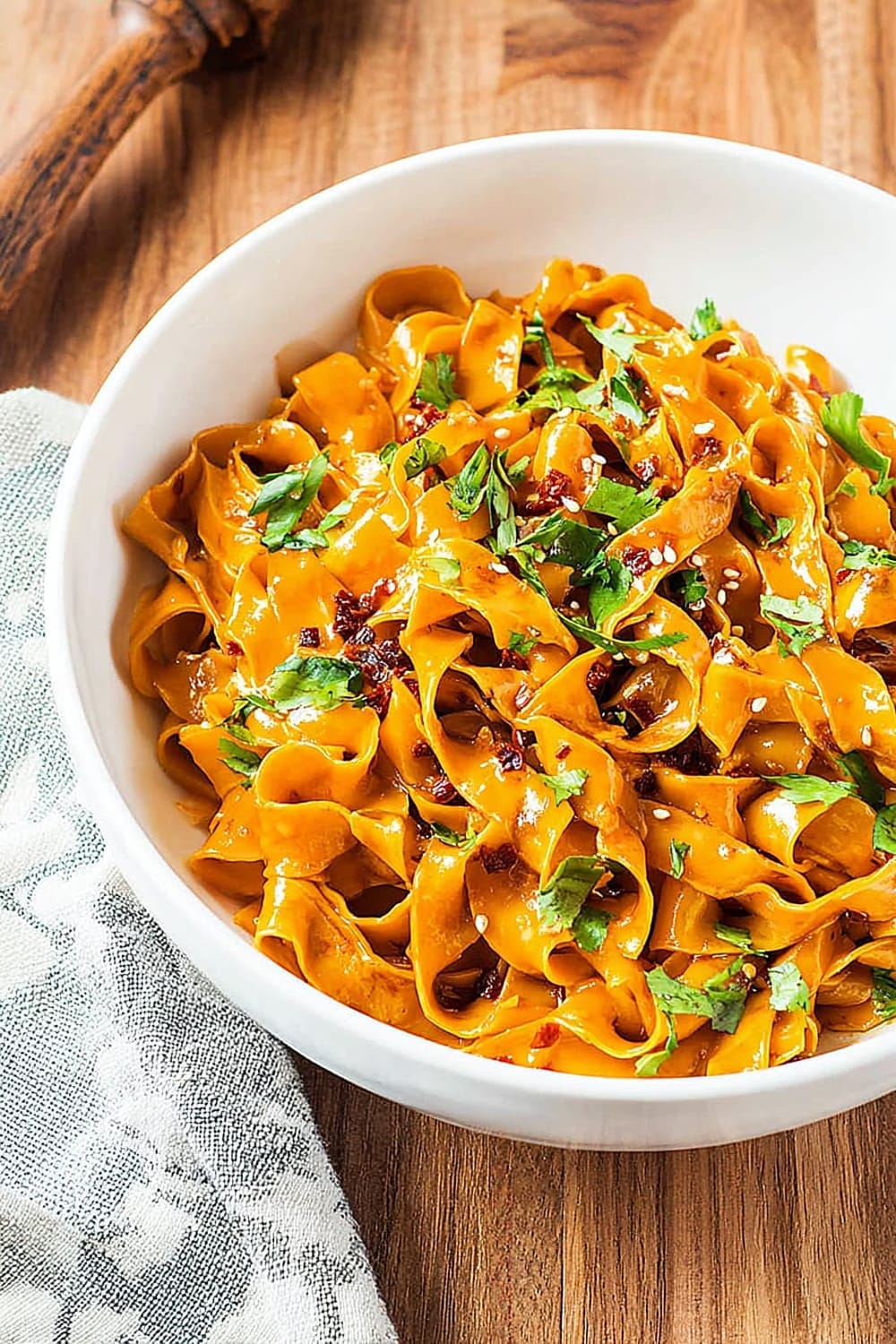
Perfect Pairing Suggestions
Beverage Pairings:
Light lagers or wheat beers complement the spicy heat without overwhelming the garlic and ginger flavors. For wine lovers, a crisp Riesling or Gewürztraminer provides sweetness that balances the chili heat beautifully. Jasmine tea or oolong tea are traditional choices that cleanse the palate between bites, while sparkling water with lime offers a refreshing contrast to the rich chili oil.
Side Dish Recommendations:
Cucumber salad with rice vinegar provides cooling contrast to the spicy noodles, while steamed dumplings turn this into a more substantial meal. Stir-fried bok choy adds green vegetables and maintains the Asian flavor profile. Cold sesame green beans offer textural variety and additional umami depth that complements the chili oil perfectly.
Complete Meal Ideas:
Start with wonton soup or hot and sour soup to prime the palate, then serve these noodles as the main course alongside tea-smoked duck or salt and pepper tofu. Finish with fresh fruit like sliced pears or lychees to cool the palate, or green tea ice cream for a more indulgent ending.
Occasion Suggestions:
Perfect for casual weeknight dinners when you want something satisfying but quick, or weekend lunch with friends who appreciate bold flavors. These noodles work beautifully for potluck contributions since they’re best served at room temperature anyway, and they make an impressive date night meal that shows cooking skills without requiring hours of preparation.
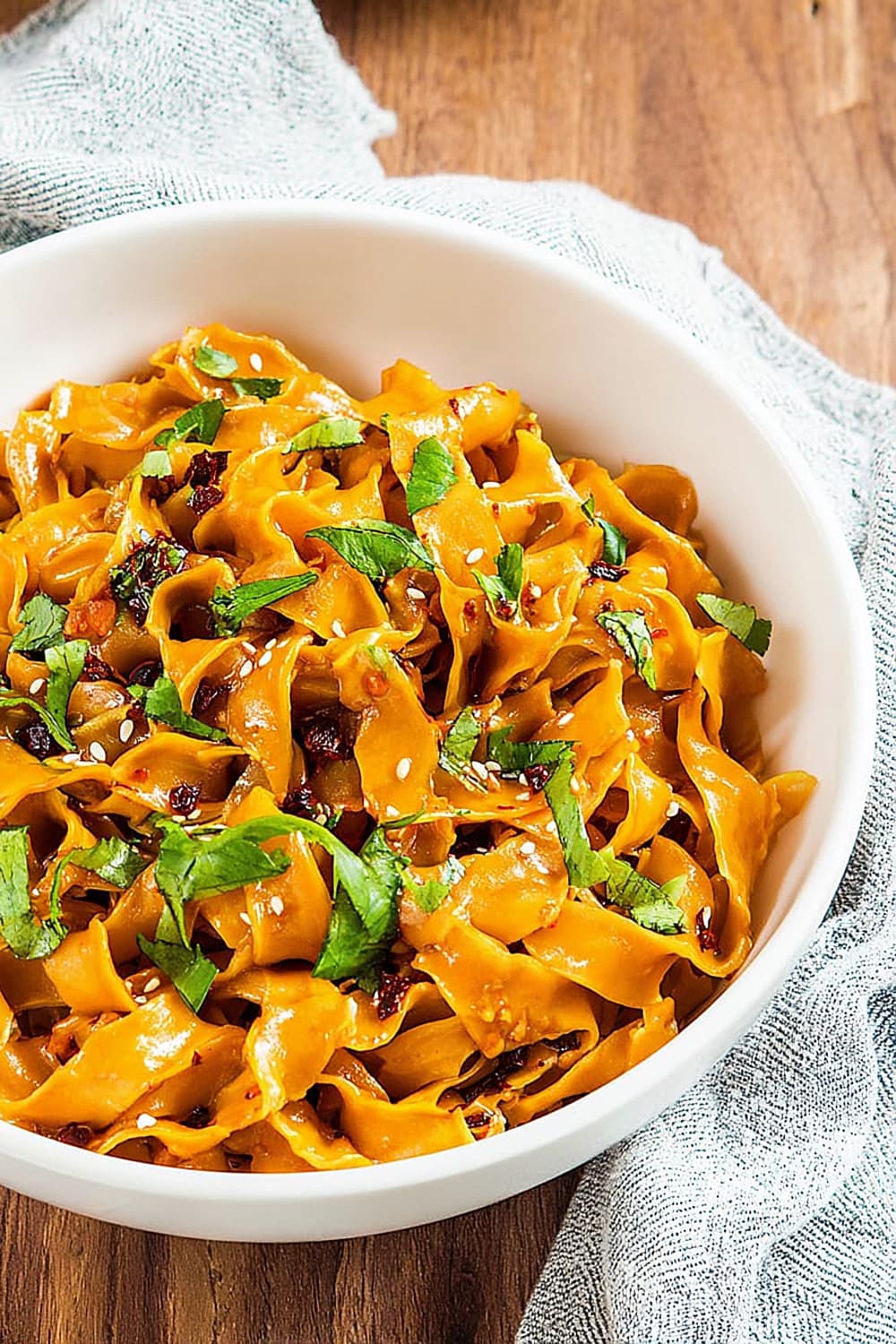
Pro Tips and Troubleshooting
Professional Techniques:
The secret to restaurant-quality chili oil is temperature control – your oil should be hot enough to sizzle when you add the garlic but not so hot that it burns immediately. Test with one piece of garlic first – it should bubble gently and turn golden over 30 seconds. Make extra chili oil and store it in the refrigerator; it keeps for up to one week and improves in flavor as the ingredients meld.
Common Mistakes and Solutions:
Burnt garlic creates bitter flavors that ruin the entire dish – if this happens, start over with fresh oil and garlic. Watery noodles dilute the sauce, so drain thoroughly and even pat dry with paper towels if necessary. Under-seasoned sauce can be fixed by adding more soy sauce or salt, but remember you can always add more – you can’t take it away.
Storage and Reheating:
Leftover noodles keep in the refrigerator for up to 3 days in airtight containers. Reheat gently in the microwave with a splash of water, or better yet, enjoy them cold as a noodle salad. The chili oil can be made up to a week ahead and actually improves with time.
Scaling Tips:
This recipe doubles or triples easily – just maintain the ratios and use a larger pot for the noodles. For meal prep, cook noodles and sauce separately, then combine when ready to eat for the best texture.
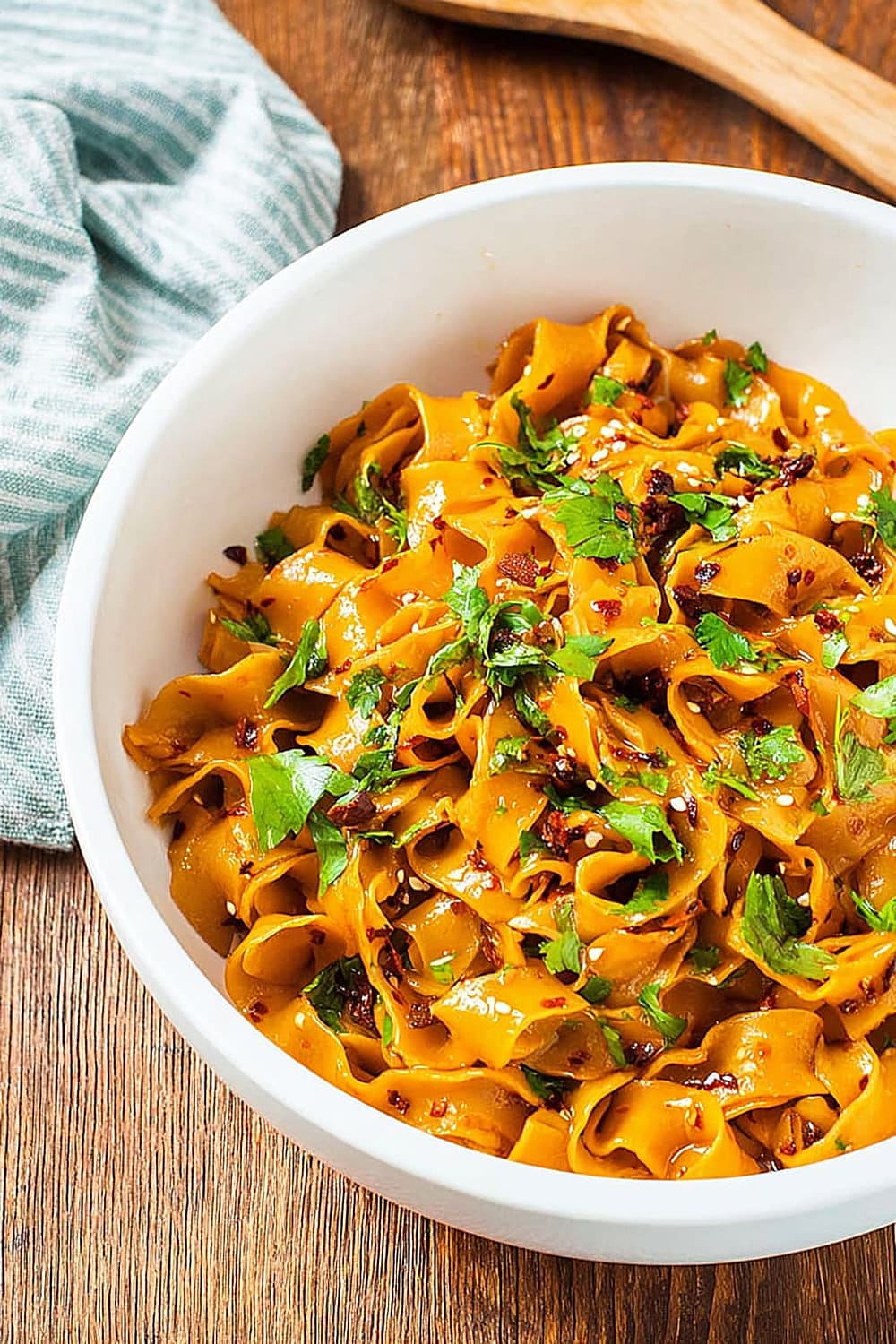
These Szechuan noodles prove that the most satisfying meals often come from the simplest techniques executed well. Master this garlic chili oil method, and you’ll have a versatile sauce that transforms everything from plain noodles to roasted vegetables into something extraordinary that’ll have everyone asking for your secret recipe.